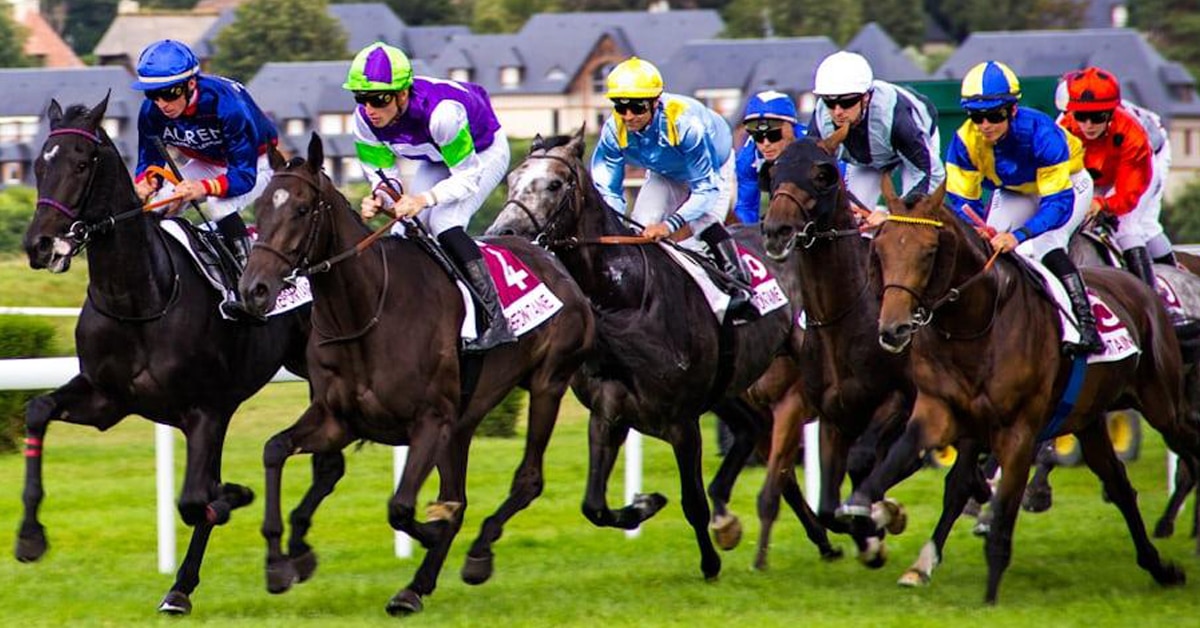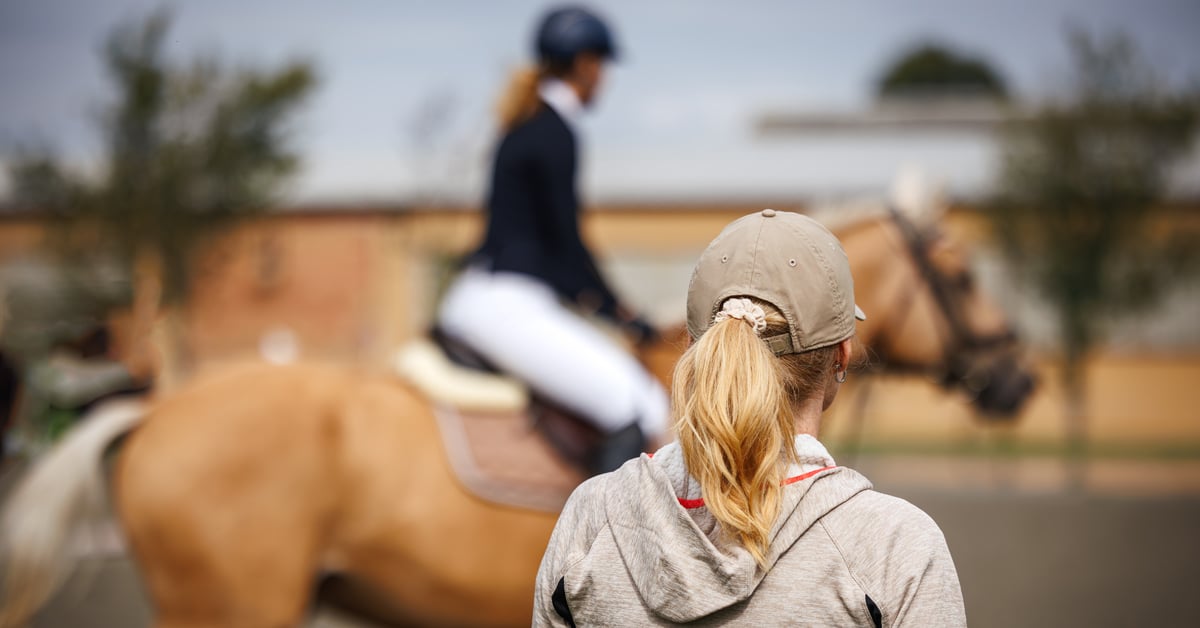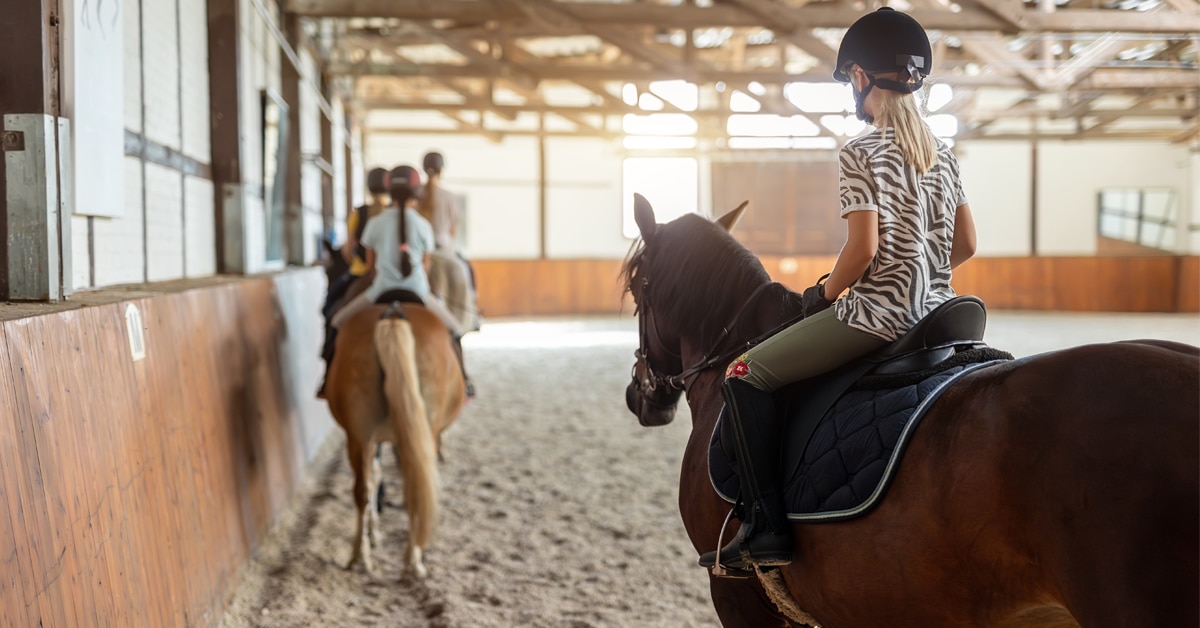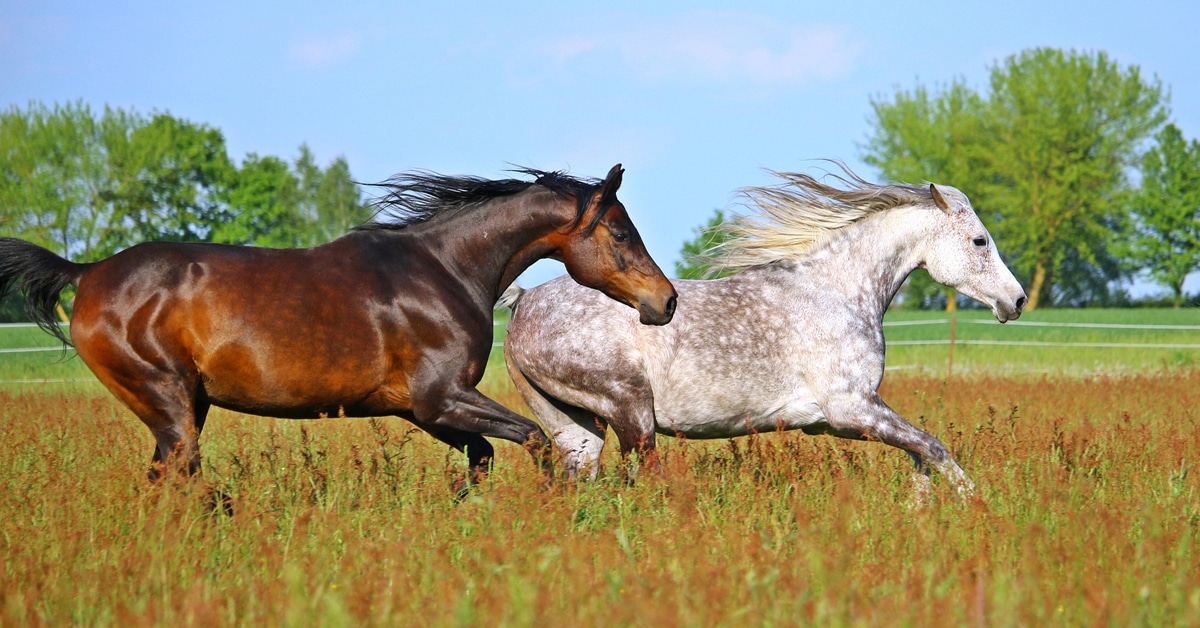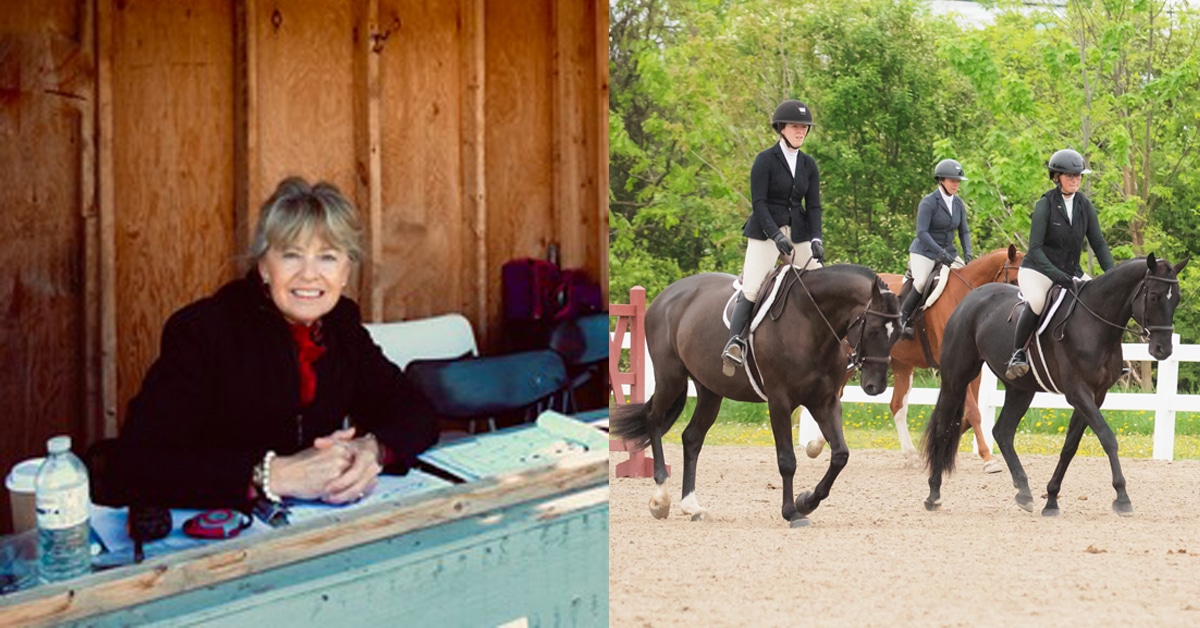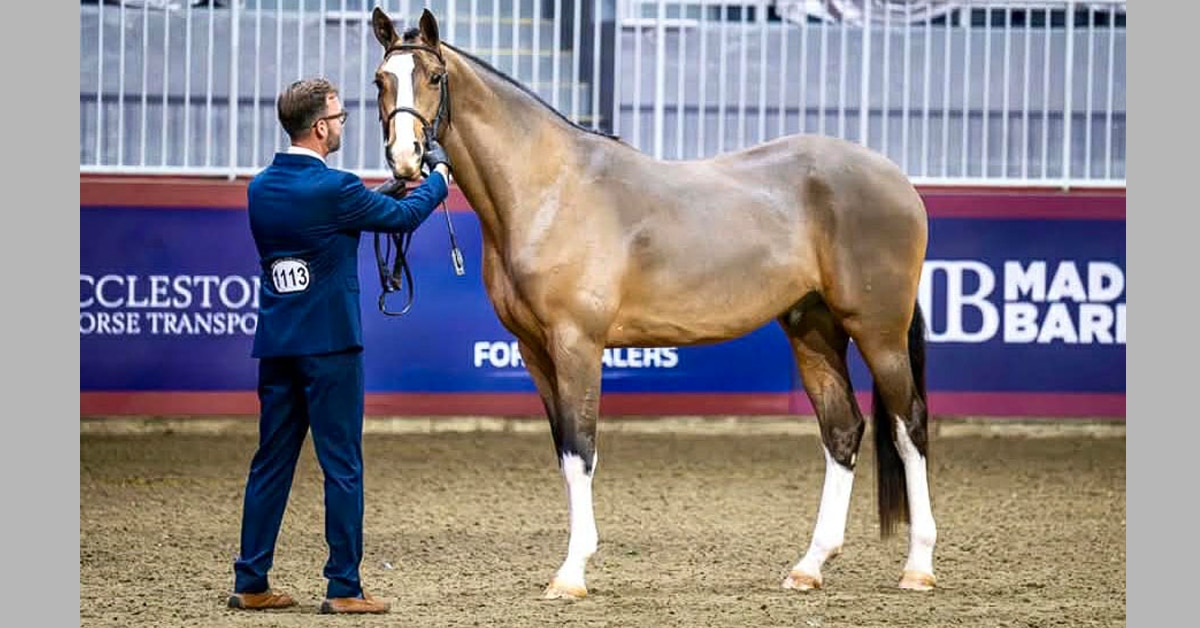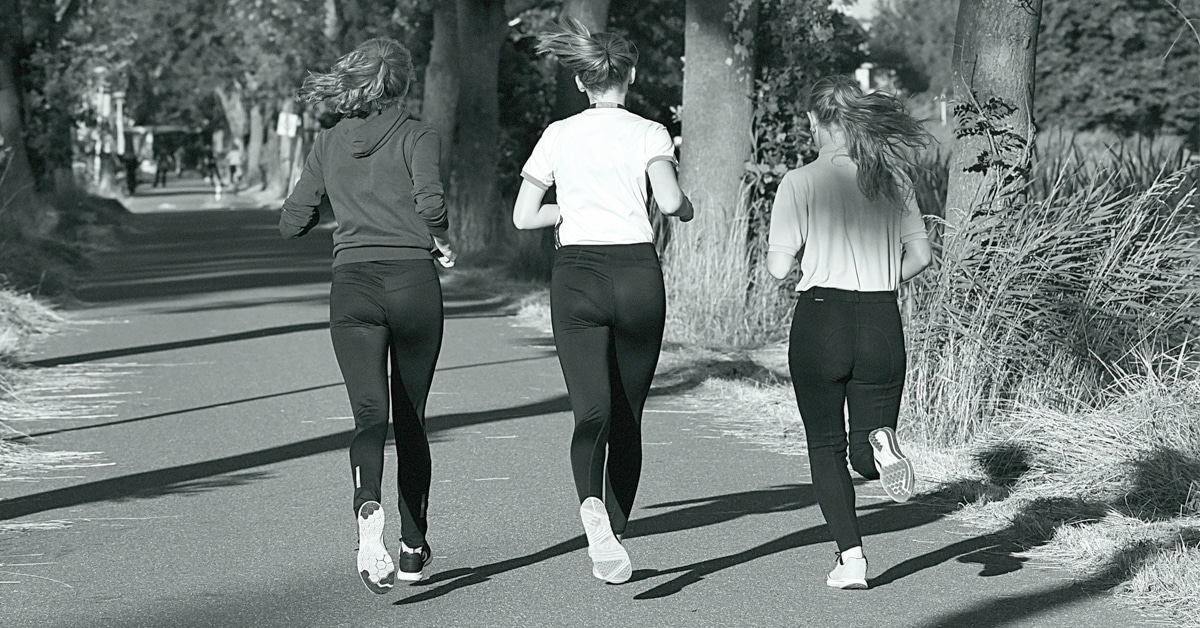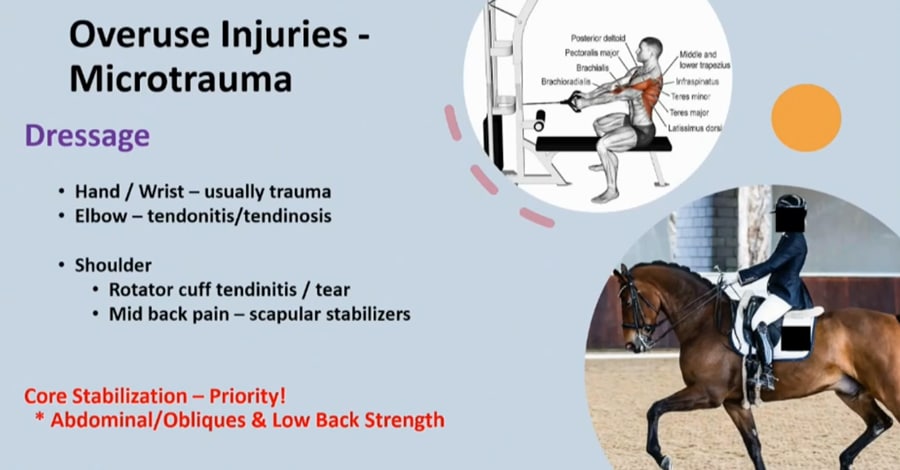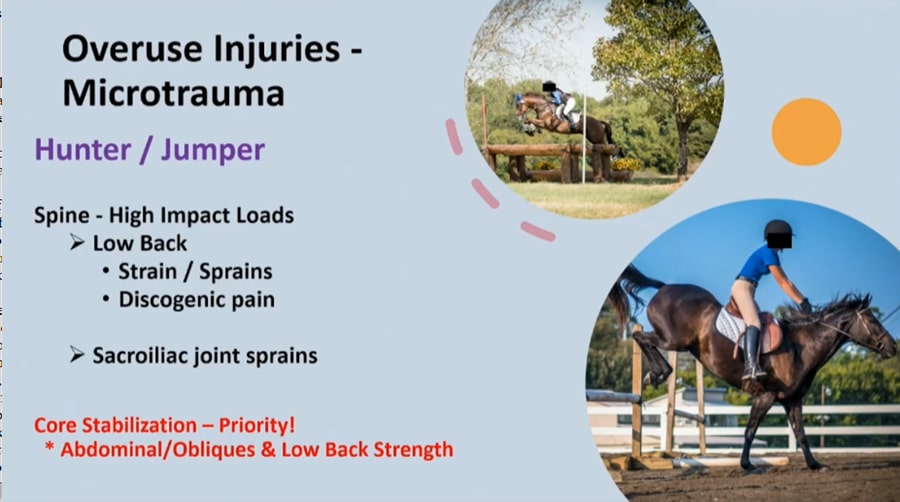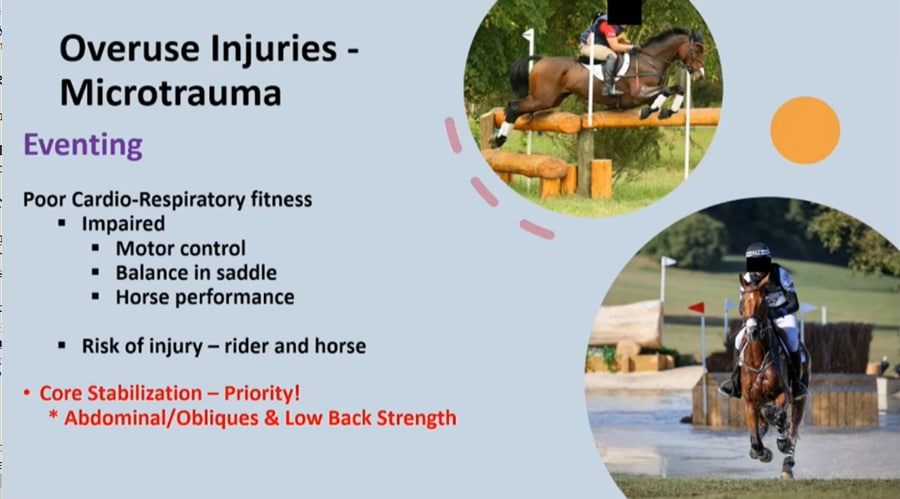Kirk Peck is an Associate Professor at Creighton University in Nebraska specializing in exercise physiology and horse/rider biomechanics. He spoke about the importance of rider fitness at the 2025 Ignite Applied Sports Science Seminar in Ocala, FL.
Does fitness matter for equestrians? We all know that horses are incredible athletes, and we dedicate much of their training time to conditioning them for the jobs they will be doing — whether racing, eventing, jumping, dressage, endurance, western performance, and so on. But what about the rider?
“Here’s the conundrum,” says Peck. “I don’t believe a lot of riders view themselves as athletes at the level they should be. As the human component of this two-entity factor, the horse and rider, they should view themselves as somebody who needs to be athletically fit.”
He described his professional background. “As a physical therapist who treats a lot of patients, I see humans, and then on the side I do equine and canine. So I get to see a lot of the three different worlds. I used to work in a sports medicine facility full time, so I saw a lot of athletes — basketball, football, ballet dancers, track and field.
“The first thing you do is go to the data, but in the equestrian world, where are we at with this? It was very difficult to find data specifically on riders. But I did find something published in Comparative Exercise Physiology in 2018 about the fitness habits and perceptions of equestrians.” In this study, they looked at Olympic disciplines — dressage, show jumping, and eventing. There were fifteen questions on the questionnaire, and they got a yield of 299 survey responses, “which is actually very high for survey data.” It concluded that:
- 98.3% surveyed agreed rider fitness had an impact on performance, BUT
- only 56.9% of them considered themselves to be athletically fit
- only 63.88% took part in any form of cross-training
Cross-training is defined as engaging in two or more sports, or types of exercise, in order to improve fitness or performance in one’s main sport. “Cross-training is so important, and we know this already with many other human athletic sports,” says Peck. “Years ago, I went to one of our national meetings. One of the talks was PGA golf, [but] the entire talk had nothing to do with PGA golfers. It was on kids being so trained in just one sport that they’re actually having more injuries.” The speaker had gone on to advise that if you want youth to become professional athletes, get them playing soccer and track and field and gymnastics and cycling and numerous other social sports, rather than focusing on just one.
In another study, 16 competitive collegiate-level female eventers had their heart rates monitored and the % of max VO₂ (volume of oxygen utilized by the body) recorded during the three phases of an event:
Not surprisingly, dressage had the lowest heart rate and the lowest percentage of VO₂ max, and the intensity level was moderate. “There is still an athletic element to this,” confirms Peck of what any dressage rider would tell you. Cross-country, naturally, elicited the highest heart rate and the highest VO₂ max of 93%.
“You’re probably above lactate threshold doing this,” said Peck of the marker of exercise intensity at which blood lactate begins to accumulate faster than the body can clear it, fatigue increases rapidly, and performance declines. “We look at lactate thresholds as a fitness indicator, so we have a lot of VO₂ data on a lot of elite athletes.”
Higher Fitness Level = Fewer Injuries
Training for sport specificity is important, but cross-training has to be included. “It’s paramount to our fitness and our training. Generally, the more fit you are, the less likely you might get an injury. It just kind of makes sense, but we don’t always have the hard data to show it.”
Peck described some common injuries that riders suffer in several disciplines:
DRESSAGE
“This was all pulled from research that I looked at on general overuse. Common injuries reported are hand, wrist—usually some sort of trauma—elbow tendonitis/tendinosis from hanging onto the reins. There are a lot of shoulder issues with this: rotator cuff tendonitis, possibly even tears, and mid-back scapular problems. You’ve got to have strong mid-back scapular thoracic stabilization, which we spend a lot of time on.”
HUNTER/JUMPER
In the hunter/jumper discipline, injuries to the spine become more prominent because of the impact involved. “It depends on how you’re riding the horse and how you’re balanced and coming down for landing. There are a lot of sprains and strains and discogenic problems, herniated disc issues, and we see a lot of SI [sacroiliac] joint and low back pain in the human.”
EVENTING
In eventing, the issue is also cardio-respiratory fitness because of the amount of time spent on cross-country. “Poor cardio-respiratory fitness impairs motor control, balance in the saddle, and horse performance,” all of which can lead to severe injuries at high speed.
“At the bottom of each of these slides, you see a consistency in red. Core stabilization is priority for all of these sports. You’re on the back of a horse, you’ve got to have core stability! We don’t just look at abdominals, we look at obliques, multifidus, several different muscles in the abdominal region and for back strength. So it’s not just doing sit-ups; you’ve got to do all kinds of other variations for core stability.”
Tools
Peck points to smartwatches and apps that use AI and are reading data constantly. Most can monitor heart rate, blood pressure, oxygen saturation, respiration rate, temperature, and even record sleep data. “When you get that feedback, it helps you achieve some of your fitness goals.” He suggests you update the device or app often, though, as the algorithms are improving all the time.
Now that you have the data, what do you do with it? “What we want to do ideally is to get riders to start thinking: ‘I’m an athlete. I need to be doing some fitness exercising. What do I need to do?’ Well, it’s not all ‘on-horse’; we need to also get off the horse and do CrossFit. We’re really getting into these HIIT [High-Intensity Interval Training] programs.”
So does fitness matter? “You bet it does,” says Peck emphatically. “It matters in every sport we know. Why would it not in equestrian? Being fit improves sport performance, protects against injuries. We can’t say it will prevent injuries; they will always happen. But it accelerates rehab.”
The Latest
